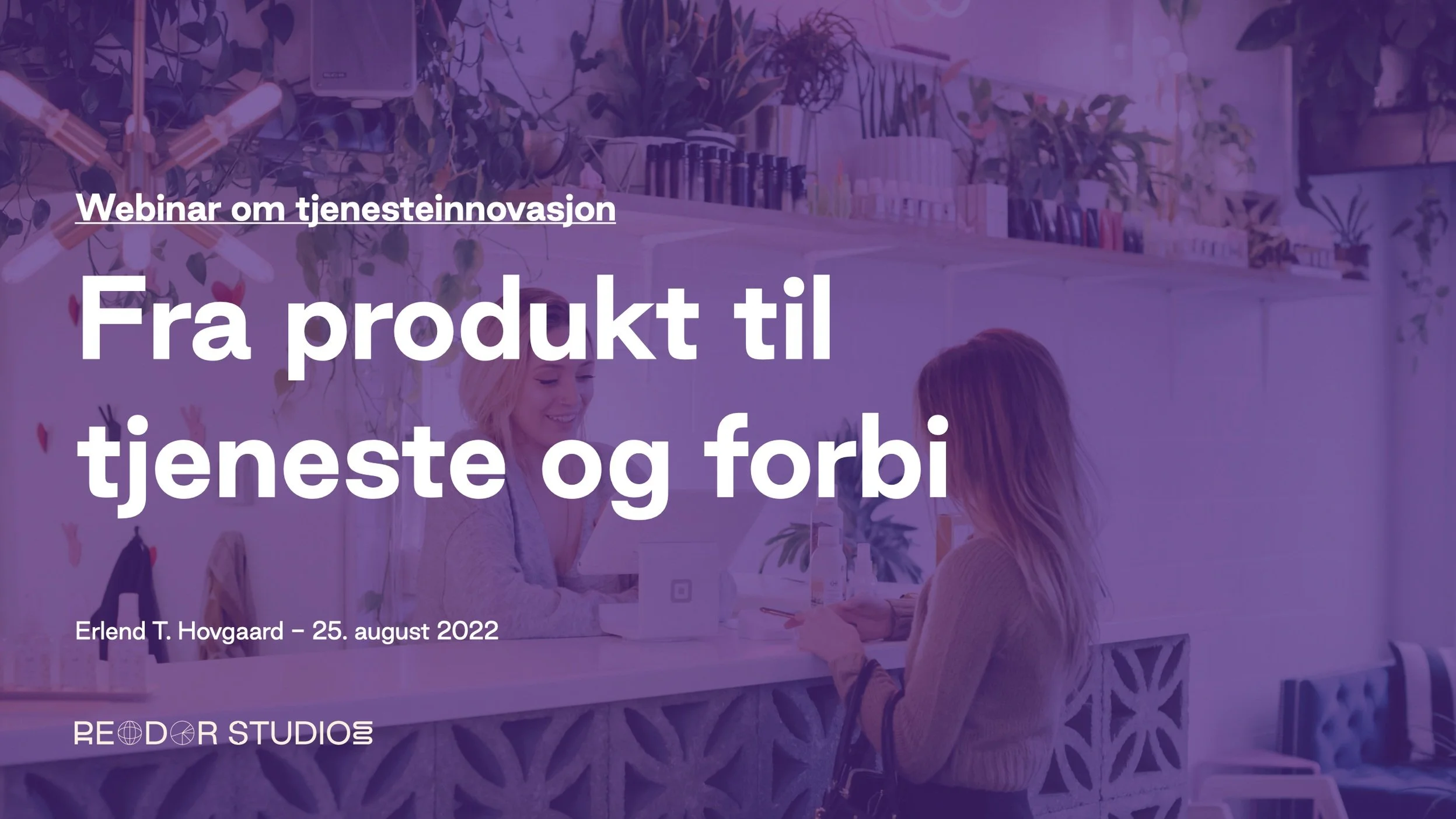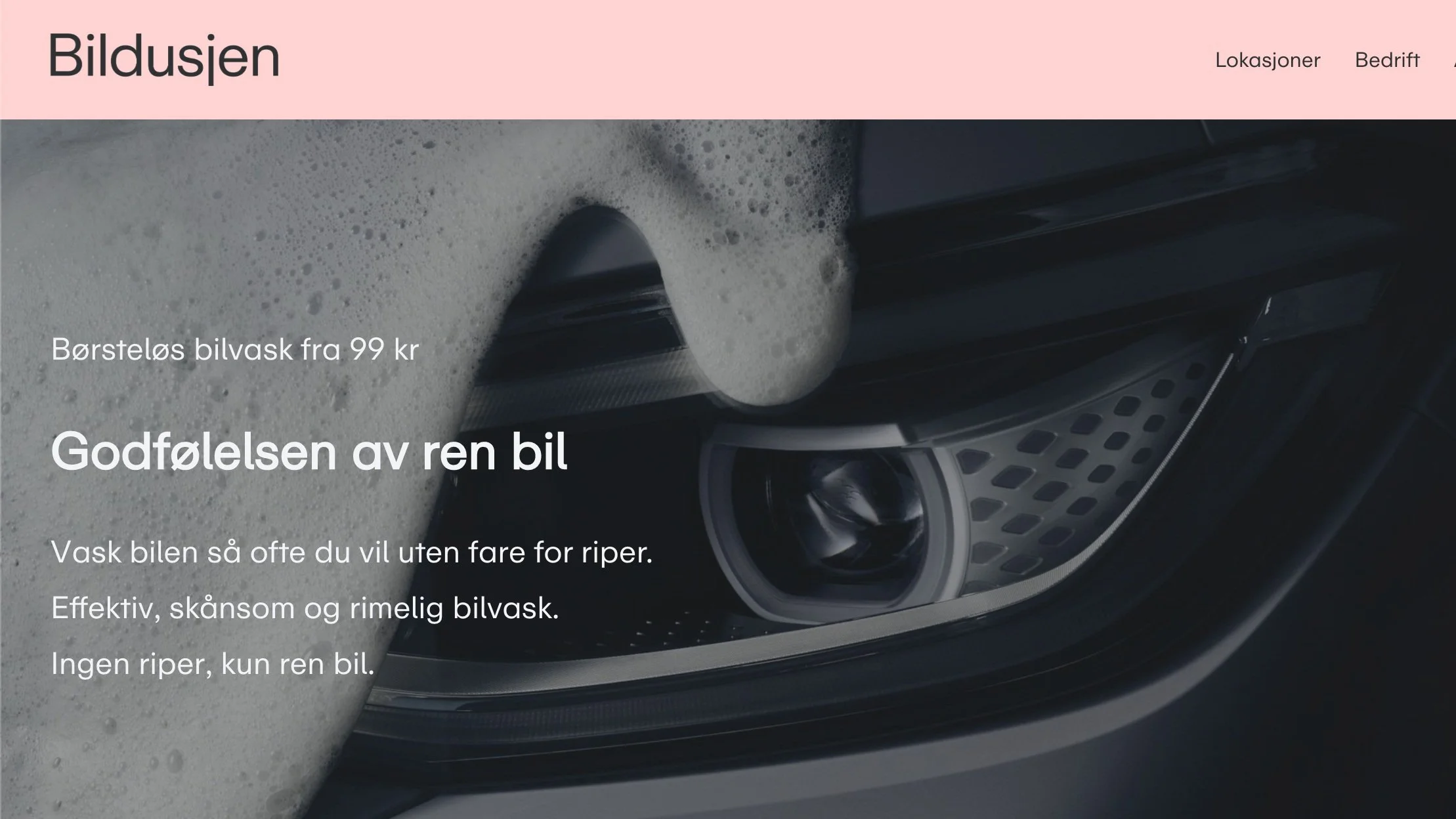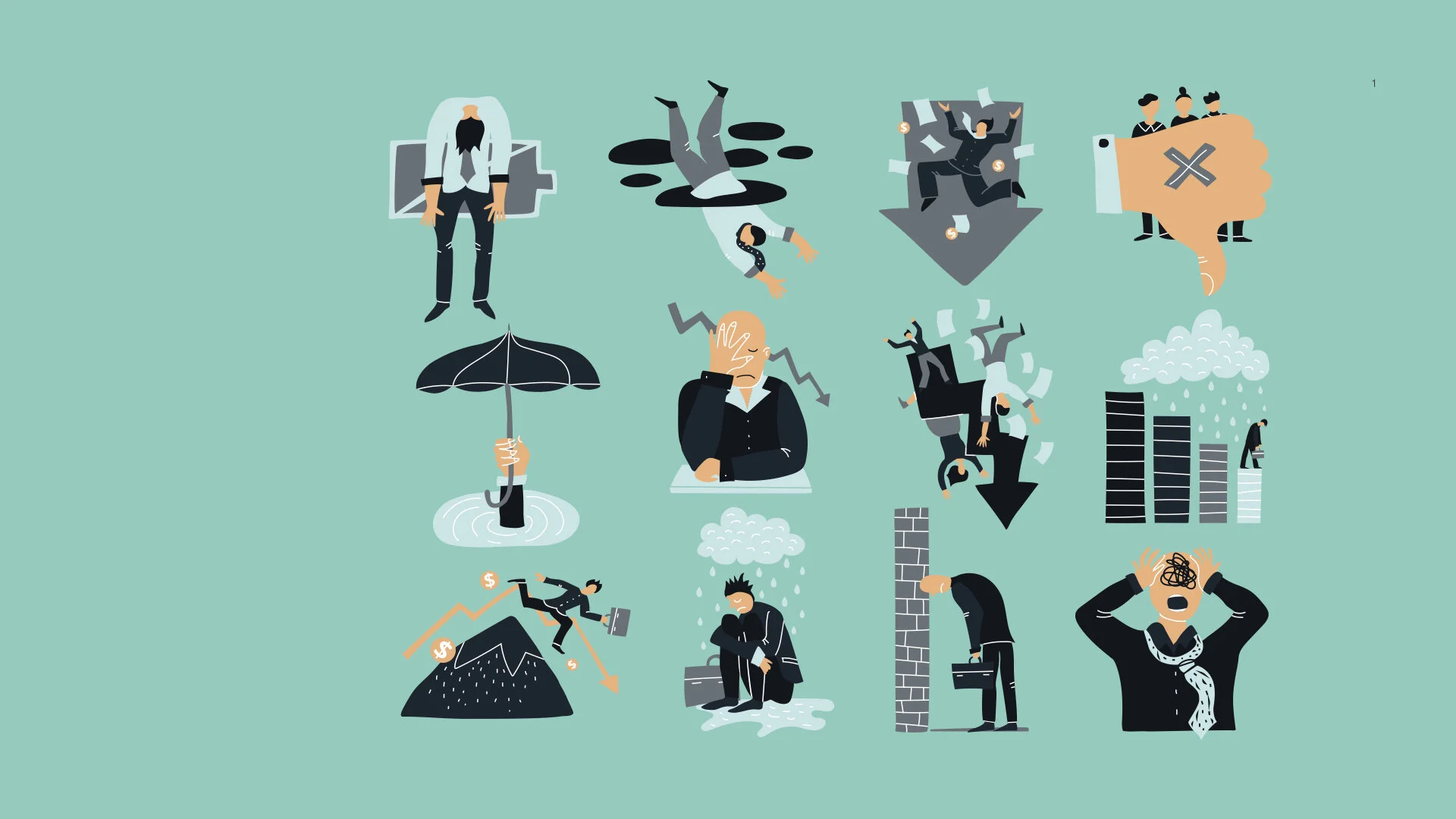
Work
Client project
Designing and scaling a software startup to accelerate circularity in wind
Although wind energy is a vital climate crisis response, enormous amounts of blades from decommissioned wind turbines end up in landfills every year. Wind farms don’t know how to reuse and recycle these valuable, non-renewable resources and plan for a sustainable end-of-life. Reodor teamed up with DNV to help solve this problem with a corporate startup.
When we teamed up with ReWind, the corporate startup DNV had founded, they had gotten some initial validation on the business idea by successfully selling consulting reports to help wind farms with the issue. Then, we helped them to refocus and double-down on the strategy of a scalable software-as-as-service business, followed by conducting customer research, designing the service, defining an MVP and most of all running rapid tests, experiments and iterations to get further validation and market traction. 2023 will be all about developing the MVP, building the team, setting up operations, as well as selling and running paid pilots with early customers.
Client project
Inventing a circular business model in construction
The construction industry releases 40% of all emissions and uses 40% of all energy and material resources due to its wasteful and linear business models. A big part of the problem is the mining of large amounts of stone and minerals which are needed in the foundation beneath new roads, buildings and bridges. Together with Feiring and their research partners, Reodor is designing a new circular business to enable more reuse, recycling and sufficiency.
Throughout 2022, my team and I collaborated with Feiring to make sense of this wicked problem, map the ecosystem and value chain, uncover contractors’ most important challenges, and explore how Feiring might contribute. After considering many different strategies and concepts, we are now developing a new service, along with a novel business model, for circular mass management. It has the working value proposition "We handle all masses, from pit to pit. So you can focus on building”. The service includes planning, logistics and reuse of mineral masses in construction projects to get both total cost down and resource utilization up. In 2023, we will further develop, design and pilot the service.
Webinar
From product to service and beyond
What is service innovation? Why can innovating services rather than products produce higher margins and more sustainable growth? How can your business move forward to succeed? I created a webinar to answer these questions free to watch on Reodor.io.
We have long since moved from products to services and beyond, but the way we work with innovation lags behind in a product-oriented, industrial world. Successful companies today don’t just develop products, but ecosystems, platforms and holistic customer experiences that provide higher margins, more loyal customers and more sustainable growth. Great services are co-created with customers, integrated into people's lives on-demand and benefit the world as a whole. Despite this, we still talk of products and product owners, stifle innovation with outdated organization and procurement, and create insight and strategy reports that end up in the drawer. In this webinar, you’ll learn about the shift that has taken place in the world, what you can gain by shifting towards services and ecosystems, and how to get started to innovate great services.
Webinar
Sustainable business model innovation
Sustainable innovation is both an obligation to future generations and the planet, as well as a huge business opportunity. With examples, methods and practical arguments, this webinar teaches how you can create a more sustainable business model for your business. My webinar is free to watch on Reodor.io.
How can you succeed with sustainable business models? Companies like Google, Airbnb and Tesla are not giants just because they have created products we love. They can equally thank their ingenious business models for their success. According to Accenture, sustainable innovation is a business opportunity worth 4.5 trillion dollars. Learn more in this webinar!
Client project
Designing a delightful carwash
Møller Mobility Services, a major car dealer, bought a car wash chain and hired us to make a new name and brand, and craft a better user experience and business model around it. Reodor is their innovation partner to enable 10x growth over the coming years.
The Reodor team and I worked with the Møller Mobility Group to develop and grow a chain of car washes. We provided a range of services, including customer journey mapping, user research, strategy, workshops and training, and helped Møller build a new name, brand, go-to-market plan and service design for the company. Using our bottom-up branding method, we gathered insights through service safaris, surveys, interviews, and market analysis. We used this information to design a more convenient, cheaper and sustainable service that would appeal to a wider customer base, and to optimize the user experience for both customers and service staff. The result is a new approach to automotive care and car wash chain that is prepared for a national scale-up.
Client project
Nudging people to bike to work
Oslo Kommune aims to encourage and help people to use their bike instead of driving to work, and teamed up with five pilot businesses to find out what works. I facilitated a process to help them uncover user insights, ideate solutions and test prototypes in iterations.
Through a series of workshops and consulting sessions, I guided them in how to conduct a service design process to understand the needs and experiences of citizens related to getting to work and back every day. Based on this we developed potential solutions, evaluated and refined them with different methods, and planned out how they could be designed, tested and piloted. The end goal was to make it easier and more delightful for Oslo citizens to use the bike to work, for those that can, so that they will create good habits for the good of the environment and their health.
Client project
Directing innovation for people, profit and planet
For a big Norwegian finance company, we set out to help them envision how they can contribute to solving the most important challenges of our time. How might we design new services, and improve existing ones, to tackle things like climate change and social exclusion?
The end goal for our client is to become the most sustainable player in banking and finance. In tight collaboration with a in-house team, the Reodor team researched relevant problems that humanity and the planet face today. This was followed by an analysis of the company’s relevant strengths and capabilities to find a fit between problem and capability – that is identify something concrete they are able to do something about as a finance company in Norway with a certain reach. In a co-creative process involving many stakeholders, this was narrowed down to a strategy with three recommended focus areas with great potential for society and the environment, and which can create commercial value for the company as well. For each area, we proposed a way for forward with innovation projects to be initiated to come up with concrete solutions that can be tested, built and launched.
Client project
Tackling the wicked problem of debt
Unmanageable debt that follow them for decades is a big problem for many self-employed people, and it has vast ripple effects for families and society as a whole. Each day over three sole proprietorships go bankrupt in Norway. This is the wicked problem my team at Designit and I were tasked with approaching in a StimuLab project together with Brønnøysundregisterene, Nav, Skatteetaten and Menon – through service design and behavioural economics.
This six-months long project was funded by StimuLab, the public sector innovation program of the Directorate of Digitalisation and Design and Architecture Norway. A team from Designit and Menon Economics, which I lead, went through a complete co-creative design thinking process, following the triple diamond approach. The process integrated quantitative and qualitative research, behavioural economics and service design.
One key finding was that many sole proprietorships start off with fundamentally poor preconditions, and without the required preparations or financial competencies in place. So a core part of our recommended strategy was a new ‘before, during and after’ experience of becoming self-employed – with interactive tools, pedagogic design and behavioural nudges. With this we aimed to nip the problem in the bud and positively affect the entire lifecycle of these small, at-risk enterprises.
Online course
Innovation by design for Videocation
Together with my good colleague Emilie Strømmen Olsen, I made this online course for Videocation, the Norwegian ‘Netflix for courses’ startup, about innovation through human-centred design.
The idea was to make a short introductory course in design thinking/human-centred design for innovation. But as craftsmen in design, Emilie and I were very conscious to not over-simplify or make the content of the course too superficial, like a recipe. And we still needed to make it short and easy to learn for the uninitiated. We decided to divide the course in two, one part focusing on the ‘why’ and the underlying principles, and the other on the general ‘how’ of a typical design-driven innovation process. A challenge for us was also not having full control of the visuals and illustrations, which to us are core, not an add-on.
Making a course is always lots of fun, and we learnt so much in the process of needing to explain and make explicit what we know intuitively. We’re now considering to make smaller, more focused follow-up courses about specific activities or methods in innovation.
Client project
Crafting a more ethical consumer credit service
For a major Norwegian bank, I lead a team of strategic designers through an intensive process to design a new credit card service and business model with a goal of making it more sustainable and attuned to new customer behaviours.
This credit card company's business model is under pressure from various sources, and traditional credit cards may not exist in ten years. The current model relies on offering rewards and cash back to encourage people to spend more than they can afford and accrue interest. This often leads to the least financially stable customers paying for everybody’s rewards. The goal of this project was to design a new, more ethical and sustainable credit service that meets customer needs and adapts to changing behaviors. The first phase involved research and the development of visionary concepts, which were prototyped and tested on potential customers with the involvement of the client team. The second phase resulted in strategic recommendations, including a revised business model, target group, value proposition, positioning and development plan, which were approved by the bank's board. The third phase focused on prototyping and testing one concept to create a user flow, rough UX designs, and an MVP outline. The next phase will involve designing, testing, developing, and launching the MVP.
Course
The Principles of Business Design
Together with a team of business designers at Designit, I made this two-day immersive course in Business Design, and by that created a new offering for Designit Professional Education.
We created a course with four modules: 1. Introduction to Business Design, 2. Insight and strategy, 3. Business model innovation, 4. Validation and measurements. To get both the theory and the practice of these topics under their skin, students learn through a mix of lectures, examples, project cases, discussion, and, most importantly, getting their hands into the material by solving a case challenge from A to Z and applying the most essential methods.
Client project
Service and business model design for a big European furniture brand
Together with two strategic designers at Designit, we helped this major European office furniture manufacturer in developing a the new direct-to-customer business model for their venture into ecommerce.
Our team was hired by a big furniture company to design a new e-commerce service, including a direct-to-consumer business model. We conducted interviews and desk research to gather information and understand customer needs and industry trends. Using this information, we defined market segments and the target group, developed value propositions and service features, and used workshops to design the service concept and business model, including a distribution model. We also made recommendations based on risk and benefit assessments and established a roadmap for an agile market entry. The final deliverable was a comprehensive service blueprint detailing the new customer journey and internal workflows. Our new strategy was implemented and ecommerce is now a significant part of the company’s business.
Client project
Paving the way for a more patient-centric company
Our client, a major American biotechnology company, had the goal of putting cholesterol on people’s agenda and putting the patient at the center of its business strategy for the cholesterol medicine they offer to people with severe cardiovascular disease.
A service designer at Designit and myself, kicked off the project with big scoping workshop to define the opportunity, key hypotheses and goals. This was followed by a brief review of existing scientific research on the experiences and needs of cardiovascular patients, as well as interventions that have been proven to improve patient outcomes. The next step was to interview patients, following up with more literature review for triangulation. With this basis we developed key actionable insights and a generalised user journey based on patient experiences before, during and after heart attack or similar incidents. The last phase of the project was to develop different strategies, tactics and concepts to enable our client to work towards improving patients’ lives and at the same time increase sales.
Client project
Building a corporate startup
Rema Forsikring (Rema Insurance) was a corporate startup that Designit helped build, launch and grow together with our client Rema 1000. Over six months, I lead our work in crafting the service concept and the brand strategy, including the value proposition, key customer journeys and a roadmap of new touchpoints.
One key insight from the research we did was that a main barrier to growth was lack of trust in and awareness of the brand. Many people were sceptical when they heard of Rema Forsikring. They report thinking things like “What is this? Is it some kind of stunt or scam? Or is actually Rema 1000 doing insurance now? Sounds fishy…” The visual identity we initially had designed was probably a part of the problem, because it was almost like the mother brand (Rema 1000), but not quite, contributing to the feeling that something was ‘off’.
Therefore, when we later A/B tested changes to increase the sales conversion rate on their website, one of many hypotheses was that showing the Rema 1000 logo, and clearly stating their endorsement of Rema Forsikring, would increase trust and therefore sales. And it did! In fact, it doubled the conversion rate. Once this was confirmed, we also adopted the same colours, fonts and logo design of Rema 1000 to tighten the connection and further piggyback on the trust in the mother brand.
Client project
Digital strategy and customer experience design for a telco
As a business designer and client manager, I lead Designit’s effort in redesigning the digital strategy and the customer experience of the main digital channels of Telenor’s over the course of two years.
We worked closely with the telecom company to understand their business goals and user needs, and what worked and didn’t work about their digital channels today. After seeking inspiration from the world’s best user experiences and developing a new digital strategy, we redesigned their website, webshop and app together with an internal team of developers, analysts and executives. This boosted online sales, reduced unnecessary calls to customer service and helped build their premium brand.
Client project
Redesigning the purchase and onboarding journey of small businesses
Together with a team at Designit, I was tasked to improve and digitalise the process SMEs go through when buying insurance and becoming a customer at this major insurance company in Norway.
As part of a team with a service designer and creative technologist from Designit, I worked to improve the process for small and medium-sized businesses (SMEs) to purchase insurance and become customers at a major insurance company in Norway. We used a service design approach, which involves understanding the needs and behaviors of our target audience and designing solutions that meet their needs. To do this, we used a variety of methods such as workshops, interviews, and prototyping to gather feedback and refine our designs. Our goal was to create a smoother, more efficient, and user-friendly experience for SMEs to buy insurance and become customers at the company.















